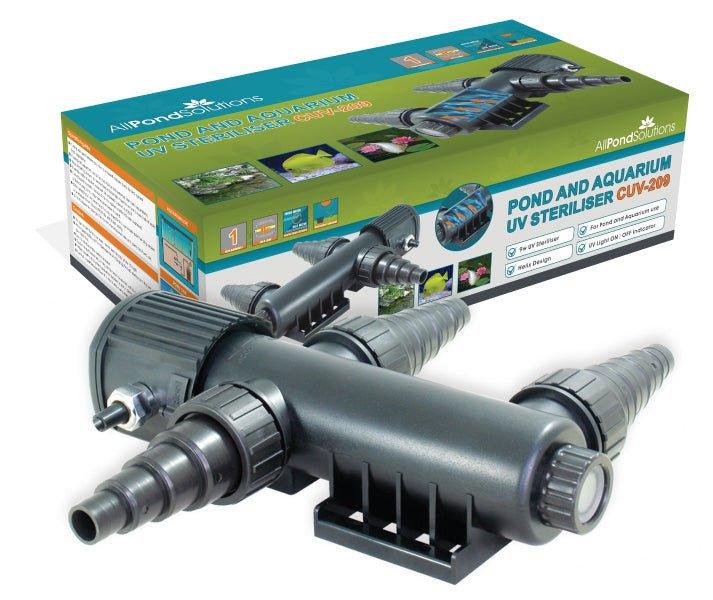How To Prepare Your Pond For Winter
Winter pond preparation will largely depend on the nature of your pond; whether you have an ornamental, fish or perhaps planted pond. All your preparations will need to be carried out before the major frosts, so make sure to get a reminder in your diary now for November time.
Do I Need to Clean my Pond?
You should ideally start cleaning your pond before the water temperature falls below 10°C. This is because the fish will still be active and less likely to sustain injuries during cleaning. Scoop up the fallen leaves using a net , then use a sludge treatment and pond vacuum to remove the sludge and organic debris from the bottom of the pond.
Should I Change What I Feed My Fish?
With the temperatures falling, you’ll need to prepare your fish for the oncoming weather changes. Since all pond fish are cold-blooded animals, their body temperature is controlled by their surroundings and their behaviour corresponds to how warm or cold they are. Cold temperatures slow down both their metabolism and appetite, causing them to struggle to digest the food properly, which can result in health problems such as constipation. Wheatgerm pellets are ideal to transition them in and out of winter since they’re low in protein and hence easily digestible. We recommend that you stop feeding your fish once the temperatures drop below 5°C.
Do I Need to Protect My Plants?
Lower temperatures also affect your plants. At the beginning of the autumn the plants start to die back, so you should prune dead stems and leaves to prevent decay in the water during the wintertime.
We recommend removing any non-hardy aquatic plants such as Water Hyacinths from the water and moving them indoors to avoid frost. If you pond is deep enough (approx. 1 metre) you can move your hardy plants (e.g. Hardy Water Lilies - Nymphaeaceae) into the deeper part of the pond to prevent the roots from freezing.
Should I Cover My Pond?
Throughout the autumn, a pond net will protect your pond from falling leaves and make future maintenance easier. Towards the winter however, it acts as a protective barrier against predators for which fish are an easy target since the lack of vegetation makes your pond more exposed. Make sure the net is securely fastened around the edges, slightly above the pond, to prevent it from sagging into the water as this can be harmful for the fish and lets the leaves and debris rot in contact with the water’s surface.
How Do I Stop My Pond Freezing Over?
UK winters are generally known to be milder in the South than the North, where the temperatures can be quite harsh and ponds are more prone to be iced over for prolonged periods. It is important to avoid your pond freezing over as the surface ice will trap in carbon dioxide and prevent oxygen from entering the pond, which is vital to the survival of your fish.
The simplest solution to stop a complete layer from forming is to put a tennis ball in your pond. The gentle movements will break up the ice. If the pond freezes over you can lay a small hot water bottle on the surface to melt the ice, creating a small opening for the toxic gases to escape.
Remember to never break ice on the pond because the shock waves can be harmful, and sometimes fatal to your fish.
Should I Switch Off My Pond Filter and Pump Over Winter?
If you have a planted or ornamental pond with no livestock, you do not need to have the equipment running throughout the winter as the bacteria that process pond waste starts to die back once the water temperature reaches 10°C.
If you do keep fish in your pond, you will need to consider how cold the winter tends to be in your area. If your temperatures normally remain above freezing, then you may prefer to keep your equipment running throughout the colder months. Whilst the bacteria in your pond filter will not be active at these lower temperatures, they will survive with the flow of oxygenated water from your pond pump, and when the warmer weather returns the bacteria will reactivate and get back to work.
If you decide to leave your equipment running you may want to consider decreasing the flow rate and moving your pump away from the bottom of the pond in order to avoid pond re-circulation, which mixes in colder surface water with the warm water at the bottom of the pond. For the same reason, you will also want to turn off your surface skimmer.
If however you experience very cold winters, or icy temperatures have been forecasted for an extensive period, you might consider switching your pump and filters off and removing them for routine maintenance while making sure the water surface doesn’t freeze completely.
If left in the pond once the water temperature reaches below 0°C, there is a risk of the water freezing in your pipework, UVs and filters that may cause them to break. If you decide to remove your equipment, make sure that they are drained of any water and that you’re filter and media is cleaned before starting back up in the Spring.
If you have a submersible pump, make sure this is kept in a bucket of water in a warm place to avoid the seals from drying out.
